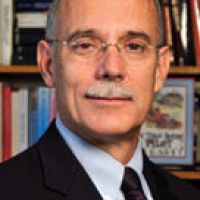Dialynas et al., 2017
Hydrologic drivers of soil organic carbon erosion and burial: Insights from a spatially-explicit model of a degraded landscape at the Calhoun Critical Zone Observatory
Dialynas, Yannis G., Rafael L. Bras, Daniel deB. Richter (2017)
American Geophysical Union 2017 Fall Meeting, New Orleans, Louisiana, 11-15 December 2017
-
Calhoun, Luquillo, INVESTIGATOR
-
Calhoun, Luquillo, INVESTIGATOR
-
Calhoun, INVESTIGATOR
Abstract
Soil erosion and burial of organic material may constitute a substantial sink of atmospheric CO2. Attempts to quantify impacts of soil erosion on the soil-atmosphere C exchange are limited by difficulties in accounting for the fate of eroded soil organic carbon (SOC), a key factor in estimating of the net effect of erosion on the C cycle. Processes that transport SOC are still inadequately represented in terrestrial carbon (C) cycle models. This study investigates hydrologic controls on SOC redistribution across the landscape focusing on dynamic feedbacks between watershed hydrology, soil erosional processes, and SOC burial. We use tRIBS-ECO (Triangulated Irregular Network-based Real-time Integrated Basin Simulator-Erosion and Carbon Oxidation), a spatially-explicit model of SOC dynamics coupled with a physically-based hydro-geomorphic model. tRIBS-ECO systematically accounts for the fate of eroded SOC across the watershed: Rainsplash erosion and sheet erosion redistribute SOC from upland sites to depositional environments, altering depth-dependent soil biogeochemical properties in diverse soil profiles. Eroded organic material is transferred with sediment and can be partially oxidized upon transport, or preserved from decomposition by burial. The model was applied in the Calhoun Critical Zone Observatory (CZO), a site that is recovering from some of the most serious agricultural erosion in North America. Soil biogeochemical characteristics at multiple soil horizons were used to initialize the model and test performance. Remotely sensed soil moisture data (NASA SMAP) were used for model calibration. Results show significant rates of hydrologically-induced burial of SOC at the Calhoun CZO. We find that organic material at upland eroding soil profiles is largely mobilized by rainsplash erosion. Sheet erosion mainly drives C transport in lower elevation clayey soils. While SOC erosion and deposition rates declined with recent reforestation at the study site, the erosional potential of the degraded landscape remains significant.
Citation
Dialynas, Yannis G., Rafael L. Bras, Daniel deB. Richter (2017): Hydrologic drivers of soil organic carbon erosion and burial: Insights from a spatially-explicit model of a degraded landscape at the Calhoun Critical Zone Observatory. American Geophysical Union 2017 Fall Meeting, New Orleans, Louisiana, 11-15 December 2017.
 This Paper/Book acknowledges NSF CZO grant support.
This Paper/Book acknowledges NSF CZO grant support.
Explore Further



